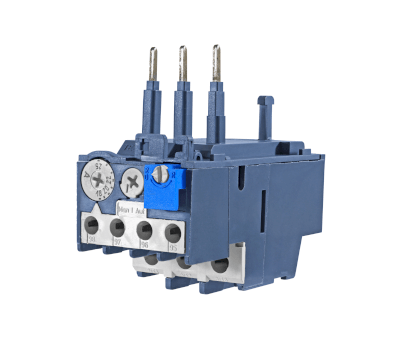What Is an Overcurrent Relay?

An overcurrent relay is a device that detects excessive currents in power systems, helping to prevent potential damage.
Within power systems managed by electric power companies, the permissible current levels are determined by generator capacity and the dimensions of transmission and distribution lines. Exceeding these levels can cause significant Joule heating, risking damage to transmission lines or generators. Overcurrent relays are essential for detecting currents that surpass these threshold values and preventing such hazards.
The overcurrent relay is identified by the number 51 in control apparatus schemes and is represented by the same number in electrical circuit diagrams.
Usage of Overcurrent Relays
Overcurrent relays are crucial in high-voltage or high-power applications, where their absence could lead to dangerous overcurrent incidents. Electric power transmission and distribution companies install overcurrent relays alongside circuit breakers to segment systems. Similarly, buildings, shopping centers, and factories, particularly those with high-voltage power installations, typically employ overcurrent relays.
However, the use of overcurrent relays in low-voltage applications is rare, as overcurrent protection can be provided by circuit breakers.
Principle of Overcurrent Relays
Overcurrent relays utilize instrument current transformers (CTs) to detect overcurrent conditions.
Due to the high currents and voltages involved upstream of the distribution system, direct measurement by overcurrent relays would be impractical and costly. Instead, instrument CTs scale down the current to manageable levels, typically to a range of 0 to 1 A or 0 to 5 A, which can then be safely monitored by the relay.
The overcurrent relay processes this scaled-down current and activates an alert or breaker trip if the current exceeds preset limits. Overcurrent relays are often paired with high-voltage or special high-voltage circuit breakers to immediately disconnect power upon detecting an overcurrent.
Structure of Overcurrent Relays
1. Static Type
The static type, which operates under electronic control, is now predominant. Some models do not require a separate power supply, offering a characteristic curve similar to inductive types.
2. Induction Disk Type
This design relies on the interaction between eddy currents in the iron core and a rotating disc, producing a magnetic field that triggers operation. While the induction disk type was once common for protective relays, it has largely been replaced by static types due to susceptibility to errors from environmental and internal factors, such as temperature fluctuations, vibrations, and component aging.
Types of Overcurrent Relays
The mechanisms for triggering the relay to act are categorized into three methods: current trip, voltage trip, and capacitor trip.
1. Current Trip Method
This method employs an electric current to activate the trip coil of a vacuum circuit breaker, commonly used in smaller power installations.
2. Voltage Trip Method
Utilizing voltage to activate the trip coil, this method is preferred in large-scale installations. A DC power supply with a backup battery ensures reliable operation, even during outages, but increases the system’s cost.
3. Capacitor Trip Method
A variant of the voltage trip method, the capacitor trip method operates without a DC power supply. A built-in capacitor allows for operation during power failures, though its limited charge capacity restricts the number of uses.